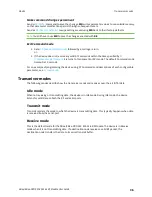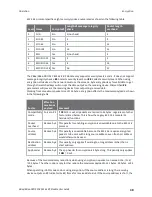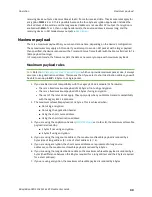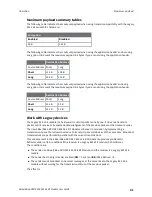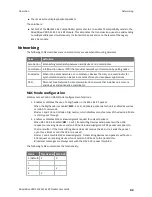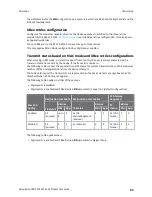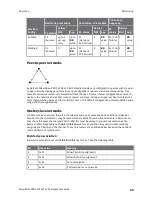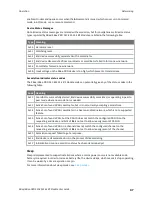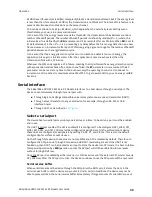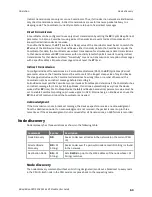
Operation
Clear Channel Assessment (CCA)
XBee/XBee-PRO S2C 802.15.4 RF Module User Guide
48
Sleep conditions
Since instructions stop executing while the device is sleeping, it is important to avoid sleeping when
the device has work to do. For example, the device will not sleep if any of the following are true:
1. The device is operating in command mode, or in the process of getting into command mode
with the +++ sequence.
2. The device is processing AT commands from API mode
3. The device is processing remote AT commands
4. Something is queued to the serial port and that data is not blocked by RTS flow control
If each of the above conditions are false, then sleep may still be blocked in these cases:
1. Enough time has not expired since the device has awakened.
a. If the device is operating in pin sleep, the amount of time needed for one character to be
received on the UART is enough time.
b. If the device is operating in cyclic sleep, enough time is defined by a timer. The duration of
that timer is:
i. defined by
ST
if in
SM
5 mode and it is awakened by a pin
ii. 30 ms to allow enough time for a poll and a poll response
iii. 750 ms to allow enough time for association, in case that needs to happen
c. In addition, the wake time is extended by an additional
ST
time when new OTA data or
serial data is received.
2. Sleep Request pin is not asserted when operating in pin sleep mode
3. Data is waiting to be sent OTA.
Clear Channel Assessment (CCA)
Prior to transmitting a packet, the device performs a CCA (Clear Channel Assessment) on the channel
to determine if the channel is available for transmission. The detected energy on the channel is
compared with the
CA
(Clear Channel Assessment) parameter value. If the detected energy exceeds
the
CA
parameter value, the device does not transmit the packet.
Also, the device inserts a delay before a transmission takes place. You can set this delay using the
RN
(Backoff Exponent) parameter. If you set
RN
to 0, then there is no delay before the first CCA is
performed. The RN parameter value is the equivalent of the “minBE” parameter in the 802.15.4
specification. The transmit sequence follows the 802.15.4 specification.
By default, the
MM
(MAC Mode) parameter = 0. On a CCA failure, the device attempts to re-send the
packet up to two additional times.
When in Unicast packets with
RR
(Retries) = 0, the device executes two CCA retries. Broadcast
packets always get two CCA retries.
Note
Customers in Europe who have the XBee 802.15.4 module must manage their CCA settings. See
for
CA
values.
CCA operations
CCA is a method of collision avoidance that is implemented by detecting the energy level on the
transmission channel before starting the transmission. The CCA threshold (defined by the
CA
parameter) defines the energy level that it takes to block a transmission attempt. For example, if CCA
is set to the default value of 0x2C (which is interpreted as -44 dBm) then energy detected above the -



